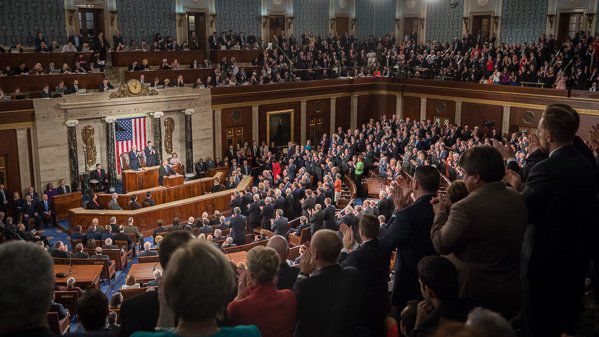Mass: Iowa provides example for states dealing with gerrymandering

Congress Stock
July 7, 2018
Politicians and reporters have long wondered if it was finally time for the Supreme Court to rule on a formal definition of gerrymandering.
On June 18, the Supreme Court decided not to make that decision. Instead, they decided that the plaintiff did not have standing to sue the state legislature, effectively punting the case back to the lower court.
The case itself was over the voting district map drawn in Wisconsin by the Republican-dominated state assembly and the court also ruled on a Maryland congressional district map drawn by Democrats the same week. The issue of gerrymandering stretches across party lines, and politicians in both parties are more than willing to use the power given to them at the state level to entrench their majorities and affect their parties’ control at the national level.
It is time for all states to take a serious look at fixing this grave issue. It hurts our democracy, encourages political polarization and promotes gridlock in government.
If you want to sink a little bit of time into it, fivethirtyeight.com has a great site where you can gerrymander districts to best entrench Republican or Democrat majorities to see how it would impact your state.
How do we fix the problem of gerrymandering? We, as a country, must address it by changing our laws at the state level. This is a very doable proposition.
We even have a good model for other states to follow — the Iowa model.
Iowa’s model for redistricting has received wide acclaim. Former Iowa Congressman Tom Latham spoke about it in an article for the Boston Globe.
“The system in Iowa, while it isn’t always the greatest thing for the candidates themselves because it does cause competitive races throughout the state, at least forces everyone to actually communicate and to hear all points of view,” Latham said.
Additionally, groups like FairVote that work to advance reforms like the prevention of gerrymandering have raised Iowa’s process up as a standard. NPR has also highlighted it on a national stage.
What makes Iowa’s redistricting process so great? It takes the politics out of the equation. Iowa’s nonpartisan Legislative Services Agency (LSA) is tasked with creating the maps without input from any politicians.
The LSA is not even able to take into account any political data about where people of different parties live, or where the current incumbents live. In the past, this has led to instances where legislators find themselves living in a new district once the new map is in place, meaning they have to find ways to get elected by a new group of constituents.
Furthermore, Iowa law prevents the LSA from using district borders to break up counties or towns without good reasons relating to population distribution.
This prevents strangely shaped districts specifically engineered to give a certain party an edge. One prime example is Pennsylvania’s 7th Congressional district, which bears a striking resemblance to Goofy kicking Donald Duck.
All of these reforms come together to make good maps without legislators — who have a vested interest in getting reelected — influencing the creation of their districts.
So how do we let voters choose their representatives, and not the other way around? More states need to take up the Iowa model and institute these common sense reforms.















